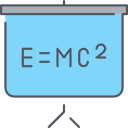
Skripsi
KLASIFIKASI PENYAKIT BERBASIS BAGGING MENGGUNAKAN NAÏVE BAYES, DECISION TREE, DAN SUPPORT VECTOR MACHINE
Penilaian
0,0
dari 5In classification, finding the optimal model to handle a specific problem is crucial. Various algorithms, such as Naïve Bayes, Decision Tree, and Support Vector Machines (SVM), each have their own strengths and weaknesses. One commonly used technique to enhance model performance is Bagging, the ensemble technique. Bagging combines weak models into a stronger model by reducing bias and variance. This research explores the application of the Bagging aggregation technique using Naïve Bayes, Decision Tree, and SVM for disease classification in the Multiple Disease Prediction dataset obtained from Kaggle. The purpose is to develop a Bagging-based classification system that can improve model performance and demonstrate an alternative method for enhancing model performance. After preprocessing the dataset, it was found that the model’s performance was subpar, so the training and testing sets were combined, shuffled, and split again to provide optimal conditions. The results show that Bagging improves model performance, especially the Bagged Decision Tree model, achieving the highest F1-Score of 0.971. However, other models did not show the same results. Models Bagged with Naïve Bayes and SVM showed improvement compared to the normal models, but the performance of the superior algorithm, Decision Tree, decreased, making the overall performance suboptimal. The largest performance drop was observed in the Bagged Naïve Bayes and SVM model, with a score of 0.625. The findings indicate that the Bagging-based classification system has been successfully implemented, but clear results regarding the improvement of model performance using the Bagging aggregation technique have not yet been obtained.
Availability
| Inventory Code | Barcode | Call Number | Location | Status |
|---|---|---|---|---|
| 2507000033 | T160507 | T1605072024 | Central Library (Reference) | Available but not for loan - Not for Loan |
Detail Information
- Series Title
-
-
- Call Number
-
T1605072024
- Publisher
- Indralaya : Prodi Teknik Informatika, Fakultas Ilmu Komputer., 2024
- Collation
-
xvii, 88 hlm.; ilus.; tab.; 29 cm.
- Language
-
Indonesia
- ISBN/ISSN
-
-
- Classification
-
004.07
- Content Type
-
Text
- Media Type
-
-
- Carrier Type
-
-
- Edition
-
-
- Subject(s)
- Specific Detail Info
-
-
- Statement of Responsibility
-
MI
Other version/related
No other version available
File Attachment
Comments
You must be logged in to post a comment
 Computer Science, Information & General Works
Computer Science, Information & General Works  Philosophy & Psychology
Philosophy & Psychology  Religion
Religion  Social Sciences
Social Sciences  Language
Language  Pure Science
Pure Science  Applied Sciences
Applied Sciences  Art & Recreation
Art & Recreation  Literature
Literature  History & Geography
History & Geography